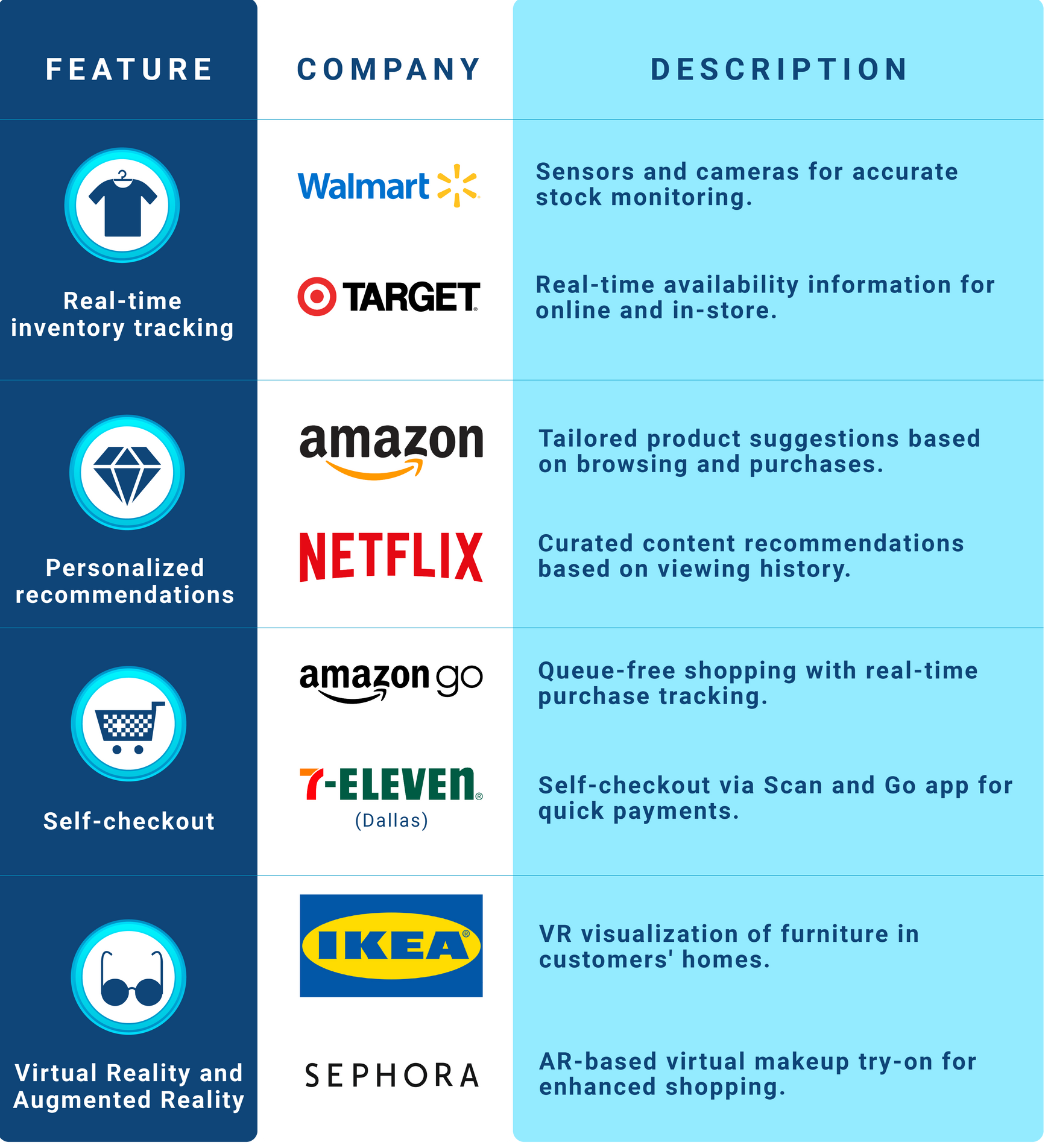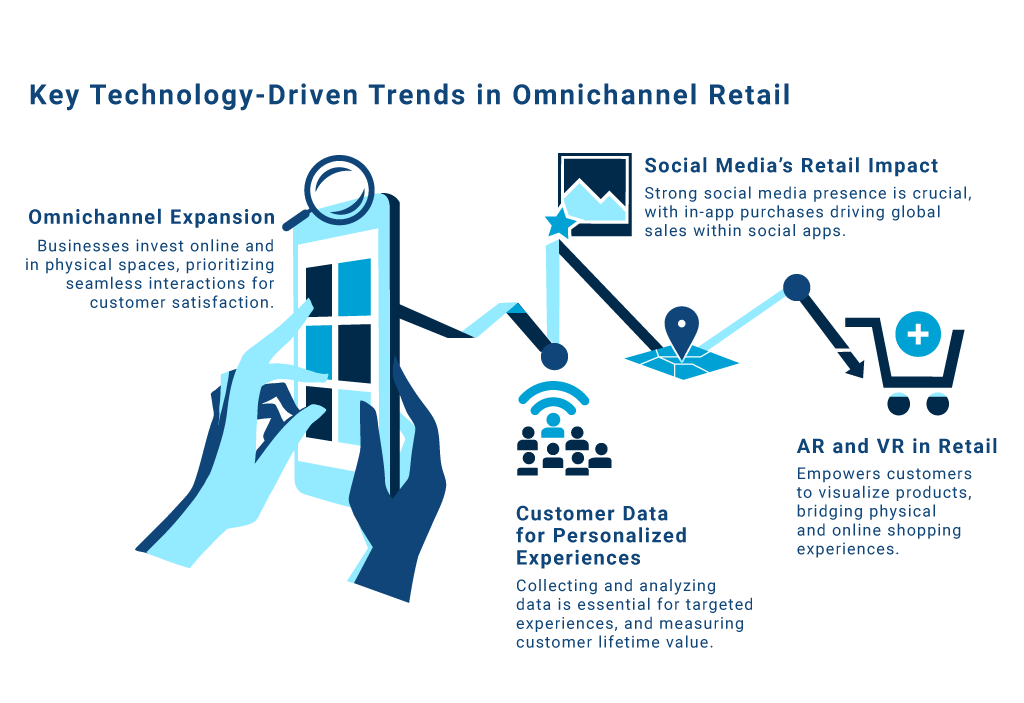Creating a Seamless Shopping Experience Through Omnichannel Retail
Creating a Seamless Shopping Experience Through Omnichannel Retail
Omnichannel retail is a fully integrated and customer-centric approach to commerce that engages shoppers through multiple digital and physical touchpoints. It aims to provide a consistent and convenient experience across all channels, including web, brick-and-mortar stores, and mobile apps. This strategy allows retailers to meet the evolving expectations of customers who use various channels and devices for their shopping needs. In contrast to the traditional, single-channel model, which focused on a sole distribution system, omnichannel retail embraces the digital age and offers customers a choice of purchasing options.
By adopting a multi-channel approach, retailers can cater to the preferences of consumers and provide flexible and convenient ways to buy products or services. In today's competitive retail landscape, where customers expect seamless interactions across channels, adopting an omnichannel retail strategy has become crucial for success. It empowers retailers to stay ahead of the curve, deliver exceptional experiences, and build lasting relationships with their customers.
Technological Innovations Shaping the Omnichannel Retail Revolution
Technology is indispensable in the world of omnichannel retail as it revolutionizes the way retailers interact with customers to provide flawless shopping experiences. Real-time inventory tracking ensures seamless shopping by providing accurate product availability across channels. Personalized recommendations leverage customer behavior data to offer relevant suggestions, driving customer engagement. Self-checkout enhances the experience by reducing wait times. Virtual reality and augmented reality create immersive shopping experiences, enabling customers to visualize products prior to purchase. As technology advances, we can expect further innovations that enhance the omnichannel shopping experience.
Here are some examples of companies utilizing omnichannel technologies:

Real-time inventory tracking
- Walmart effectively employs real-time inventory tracking to maintain well-stocked shelves with desired products, utilizing sensors and cameras to monitor product movement within its stores. By doing so, they ensure customers have access to the items they seek, enhancing the shopping experience.
- Target utilizes real-time inventory tracking to deliver precise information to customers regarding product availability, both online and in-store. This proactive approach enables customers to avoid disappointment by being aware of stock status before visiting the store to make a purchase.
Personalized recommendations
- Amazon leverages customers' browsing history and past purchases to suggest relevant products.
- Netflix analyzes customers' viewing history to offer curated suggestions for movies and TV shows.
Self-checkout
- Amazon Go revolutionizes the shopping experience by eliminating the need for traditional checkout through its self-checkout convenience store model. By utilizing a combination of sensors and cameras, Amazon Go tracks customers' purchases in real time. This groundbreaking technology enables customers to seamlessly walk out of the store without the hassle of waiting in line to complete their transaction.
- In 2018, 7-Eleven stores in Dallas introduced a Scan and Pay self-checkout program, similar to Walmart's Scan and Go app. Customers use the app to scan item barcodes while shopping and pay via Apple/Google Pay or debit/credit card at the scan and pay station. After making the payment, customers receive a QR code to confirm their departure from the store.
Virtual Reality and Augmented Reality
- IKEA uses virtual reality to allow customers to see how furniture would look in their home before they buy it. This is done by using a VR headset that allows customers to walk around a virtual model of their home and place furniture in different locations.
- Sephora utilizes augmented reality to allow customers to try on makeup products before they buy them. This is done by using a smartphone app that allows customers to see how different makeup products would look on their face.
Challenges and Considerations in Omnichannel Retail
Omnichannel retail poses various challenges, including managing inventory across channels, providing a seamless checkout experience, and addressing channel conflicts. Additionally, effective data management and analysis is a critical aspect that requires attention. Collecting and leveraging customer data for improved marketing and product assortment can significantly impact business success. However, storing and analyzing vast amounts of data in a meaningful way can be challenging.

Emerging Technology Trends in Omnichannel Retail
The global e-commerce market has witnessed a remarkable surge, surpassing $8.1 trillion in sales, as reported by Statista. Projections indicate that by 2026, e-commerce will account for approximately 24% of the overall global retail sales. This surge in online shopping has spurred the emergence of pivotal omnichannel retail trends, embracing innovative approaches to engage customers. As the future of retail unfolds in an omnichannel landscape, technology will play a paramount role in shaping its course. Here are some of the key technology-driven trends in omnichannel retail for 2023 and beyond.

- As businesses focus on enriching their omnichannel experiences, the omnichannel journey is evolving with increased investments in both online and physical spaces. The pandemic accelerated the digital transformation of customer interactions, making omnichannel options even more popular. As businesses prepare for the future, it is crucial to prioritize seamless in-person and online interactions to meet the demands of customers who now embrace omnichannel shopping. This includes options like online purchase with in-store pickup or curbside pickup, in-store purchase with home delivery, and online purchase with in-store returns.
- Having a strong social media presence is crucial for online retailers as it allows customers to engage with the brand, explore products, and connect with the community. Social media apps have evolved into popular shopping channels by incorporating in-app purchase capabilities. Global sales within social apps are projected to reach $699 billion by the end of 2024, making it a valuable platform for customer engagement. Building an authentic and relatable online persona, utilizing social media influencers, and incorporating user-generated content are effective strategies to connect with customers and drive direct purchases within their preferred apps.
- The use of customer data will continue to be a cornerstone of omnichannel strategies. As businesses aim to create personalized experiences and drive additional sales, the importance of collecting and analyzing customer data will grow. With the rise of consent-based information and the decline of cookies, building trust with customers and obtaining their voluntary data will become a key trend. This approach will provide businesses with firsthand insights into customer motivations and preferences, enabling them to deliver targeted experiences and effectively measure customer lifetime value.
- Augmented reality (AR) and virtual reality (VR) are poised to gain widespread adoption in the retail industry, empowering customers to visualize products in their own surroundings or immerse themselves in virtual environments. This technology will prove particularly valuable for high-value items or products that are challenging to envision online. Think with Google, a resource that shares latest marketing research and digital trends, highlights that a significant majority of customers are keen on leveraging AR during their shopping journeys. Moreover, businesses that integrate virtual and augmented reality elements into their advertising efforts witness elevated conversion rates. By harnessing these tools, businesses can bridge the gap between physical stores and online shopping, delivering a seamless and captivating retail experience for customers.
Private Equity's Growing Interest in the Omnichannel Retail Sector
Private equity firms are increasingly active in the omnichannel retail sector, driven by several key factors. Firstly, the rapid expansion of e-commerce has captured the attention of these firms, prompting investments in retailers poised to leverage this growth.
Secondly, the demand for seamless omnichannel integration has become crucial for retailers to stay competitive in the market. As a result, private equity firms are targeting retailers that prioritize investments in omnichannel capabilities.
Lastly, the omnichannel retail space remains in its early stages, offering significant growth potential. Private equity firms are seeking out retailers with the capacity for rapid expansion to capitalize on this evolving market. Stax assists PE firms in locating the right investments while providing clients with the knowledge and tools to make the most from them. To learn more about Stax and our services, visit www.stax.com or contact us here.
Sources
- Intel. “What Is Omnichannel Retail?”, accessed Jun. 2023.
- Adhi, Praveen, Eric Hazan, Sajal Kohli, and Kelsey Robinson. “Omnichannel Shopping in 2030.” McKinsey & Company, Apr. 9, 2021.
- SalesForce. “How Are Customer Touch Points Changing.”, accessed Jun. 2023.
- CB Insights. “The Technology Driving The Omnichannel Retail Revolution.”, May 2021.
- Heslop, Brent. “Omnichannel Retail: 6 Technologies to Transform Your Strategy.” Content Stack, Nov. 2019.
- Aeo Logic. “The Importance of Information Technology in Retail.”, Jul 2022.
- Hope, Diane. “AI is Driving Huge Changes in Omnichannel Marketing.” Smart Data Collective, Mar. 2023.
- Columbus, Louis. “10 Ways AI & Machine Learning Are Revolutionizing Omnichannel.” Forbes, Feb. 2019.
- Shah, Srushti. “List of Top Tools and Technology to Boost Your Omnichannel Retail Strategy.” Business 2 Community, Jul. 12, 2021.
Read More

Featured by Power Magazine: China Coal-Fired Generation Additions Tied to Economics, Energy Security
All Rights Reserved | Stax LLC | Powered by Flypaper | Privacy Policy





